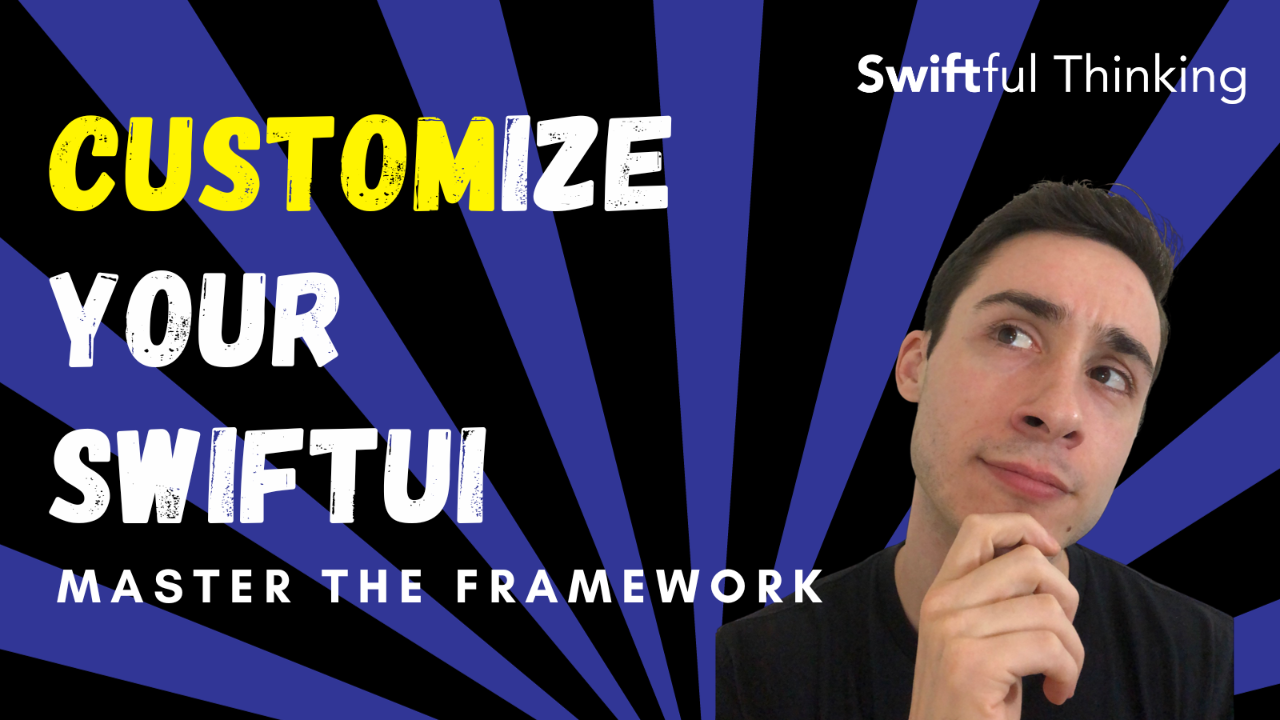
Customize Your SwiftUI: Mastering the Framework
Mastering the art of writing custom SwiftUI code is an essential skill for iOS developers. It not only provides the means to craft unique and finely-tailored user interfaces but also fosters a deeper understanding of the SwiftUI framework. This deeper comprehension enhances problem-solving abilities, fuels creativity, and promotes a more versatile and efficient approach to app development. Custom code empowers developers to implement intricate design concepts, animations, and interactive elements, resulting in highly distinctive and responsive applications that stand out in a competitive market.
Furthermore, proficiency in writing custom SwiftUI code promotes optimization and code efficiency, leading to improved app performance and user experiences. The ability to fine-tune and control every aspect of the application ensures not only robustness but also innovation. It allows developers to address specific user needs and technical requirements, making their applications more responsive and versatile. In essence, learning the art of custom SwiftUI code is an investment in one's development skills and a strategic advantage in delivering high-quality, distinctive iOS applications.
How this course works
Below is a selection of videos that enable you to write totally custom SwiftUI code implementations. These videos have are part of a larger course, SwiftUI Advanced Learning Bootcamp. We highly recommend watching the full course, which you can view here.
Let's jump in with some critical elements for SwiftUI applications...
Cool stuff! Next we'll create custom Transitions. Now we'll be able to completely customize the way objects are being drawn on-to or off-of the user's screen.
Next let's take a look at creating custom Shapes in SwiftUI. These can become building blocks for creating complex UI designs, such as creating backgrounds, drawing lines, or making graphs and charts!
Great job! Next we will take a look at ViewBuilder, which is a building block of the SwiftUI framework. Interestingly, you've been using ViewBuilders this entire time without even knowing it! This is how the SwiftUI framework can process the declarative UI that you build.
Data flow in SwiftUI usually flows from parent-to-child Views. Sometimes, however, we want to create custom methods where the data flows back from child-to-parent. For this, we can use Preference Keys.
While Preference Keys are useful, they can be tricky to work with because you need to understand the View's environment hierarchy. Another way to pass data back to a parent view is to create a custom Binding. This approach is more direct and more commonly found in the SwiftUI framework.
You're doing great! Before we move on, let's get some practice in. In the next video, we'll use what we just learned (about Custom Bindings) and use them to create custom Alerts in our application.
Lastly, and possibly the most complex, we will take an extremely deep dive into understanding Property Wrappers. This are essential to any SwiftUI application and are used on almost every screen!
You're a SwiftUI Sensei!
As a reminder, this was the abbreviated version of the course. If you're serious about SwiftUI, we highly recommend watching the full course here.
I hope this FREE course was worth your time and helped you on your journey to becoming an expert iOS developer! If you enjoyed it, please don't forget to follow us on YouTube!
YouTube: https://www.youtube.com/c/SwiftfulThinking
Join our Discord: https://discord.gg/Fm4abM2DNh
View source code: https://github.com/swiftfulthinking
Support The Channel: https://www.buymeacoffee.com/nicksarno
Join over 2,000 iOS Engineers in our Discord! We are a community focused on helping each other learn Swift and build amazing iOS applications.
Stay updated!
Add your email to get updates on new content & discounts to upcoming courses!